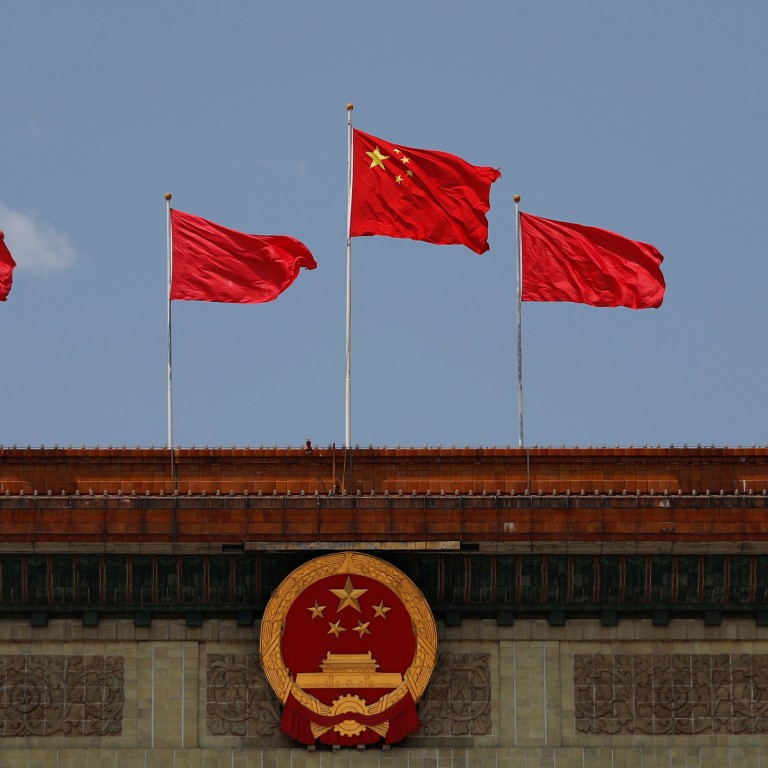
China’s economic policymakers doubling down on ‘stability’ for 2022 in the face of ‘threefold pressure’
- Annual central economic work conference wrapped up on Friday with leaders stressing the importance of boosting demand with ‘front-loaded’ policy support
- Beijing hints it will ease up on regulation of big private players after a heavy-handed crackdown this year jolted domestic markets, and excessive capital growth may instead be curbed with a type of ‘traffic-light’ mechanism
Beijing has pledged to “front-load” policies to shore up the economy next year, as leaders remained on high alert against strong headwinds at the tone-setting annual central economic work conference that concluded on Friday.
“We are facing threefold pressure, including contraction of demand, supply shocks and weaker expectations,” the official Xinhua News Agency reported, citing an official statement from the conference. “Our policy support should be front-loaded appropriately.”
The emphasis on “stability” – the word appeared 25 times in the 4,700-word statement – comes as leaders are trying to project a positive image to the world ahead of February’s Beijing Winter Olympics, and with their sights set on the 20th National Party Congress – a key political gala that will usher in twice-a-decade leadership reshuffle for the Communist Party in the second half of next year.
“We need to concentrate on stabilising the macroeconomy, keeping the economic operation within a reasonable range and maintaining social stability,” the statement said.
China says cooperation on global trade key to post-pandemic recovery
The conference took place after China’s 25-member Politburo, chaired by President Xi Jinping, said on Monday that it would “put the word of stability as the top priority” in its economic decision-making for 2022.
“[The meeting] emphasised the downward pressure – the notion of ‘threefold pressure’ was very rare in the past,” said Zhou Hao, a senior emerging markets economist with Commerzbank.
Beijing scaled back the fiscal deficit ratio this year and strictly controlled local government financing, as the actual debt of many municipal governments has risen quite high.
Is China’s local government debt a concern, and what role do LGFVs play?
“We need to improve the efficiency of our proactive fiscal policy and make it more targeted and sustainable,” the statement said.
Ding Shuang, chief Greater China economist of Standard Chartered Bank, said he believed that China is likely to set an economic growth range of between 5 and 6 per cent for next year, in line with the country’s widely cited potential growth.
“5 per cent would be the bottom line next year,” he said, adding that the range takes into consideration the government’s “reluctance to pursue a strong stimulus, given the consistent worries of walking the old road”.
Chinese authorities have already kick-started easing measures to keep the national economy from dropping below a reasonable growth range.
Speaking at the annual economic conference, authorities vowed to keep reasonable market liquidity and particularly enhance financing support for small businesses, technological innovation and green development.
Why the backbone of China’s economic machine is falling apart
“The downward pressure looks to be particularly large in the first half of next year if considering the lingering impact of the pandemic and the complicated external environment,” warned Wen Bin, chief macro analyst with China Minsheng Bank.
Meanwhile, the government hinted at its intention to ease up on its regulation of big private players, following a crackdown on Big Tech last year that saw probes and huge fines imposed on major players, jolting domestic markets.
“We must well play the positive role of capital as a production factor, but effectively control its negative role,” the statement said. “It is necessary to support and guide the development of the non-public-ownership economy.”
Instead, Beijing intends to set up a “traffic-light” mechanism – referring to areas of encouragement, bans and restrictions – to enhance supervision of capital and prevent excessive growth.
Local-level cadres were also ordered to thoroughly implement Beijing’s policies, from property curbs to de-risking measures.
“Cadres must increase their knowledge of economics and science and technology,” the statement said.
More evidence China on high alert for monetary policy changes from US and EU
“China still has lots of policy manoeuvring room and tools,” he said. “The authorities will mobilise all their resources to accomplish next year’s target.”
Beijing is due to release its official economic growth target for 2022 at its parliamentary meeting in March.
Zhang Zhiwei, chief economist with Pinpoint Asset Management, noted the major policy shift in Beijing for next year.
“2021 is all about structural and regulatory reforms, with little attention on the damage to economic growth,” Zhang said. “The press release from the working conference today seems to indicate that window has closed.
“[Beijing] plans to have a comprehensive overhaul of policies in 2022”.
This suggests that the government will take a step back on energy-supply reform and avoid rushing too fast
In the statement, Beijing also stressed that the carbon-neutrality initiative cannot be “accomplished in one battle”, and noted that the nation’s energy supply is still dominated by coal.
“This suggests that the government will take a step back on energy-supply reform and avoid rushing too fast,” Zhang said. “On the property side, the government will also take a less aggressive stance, likely allowing some cities to relax restrictions in their property markets.”
However, he noted, this “doesn’t mean the government will give up these structural reforms” such as in the energy sector and housing market.
“But the government may take a step back in 2022 and avoid causing too much collateral damage,” Zhang said.


